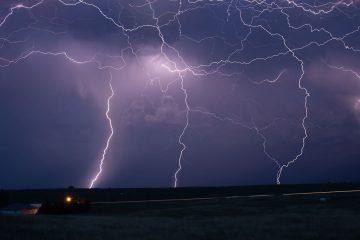Understanding Twisters: Nature’s Powerful Storms

Introduction
Twisters, or tornadoes, are rapidly rotating columns of air that extend from thunderstorms to the ground. These violent weather events can cause devastating damage to properties, landscapes, and even lives. Understanding the science behind twisters is crucial for preparedness and safety, especially in regions where they frequently occur, like the Tornado Alley in the United States. As climate change continues to influence weather patterns, the frequency and intensity of tornadoes may also shift, making this topic increasingly relevant for communities.
What Causes Twisters?
Twisters form under specific meteorological conditions, particularly during severe thunderstorms known as supercells. These storms require three key ingredients: warm, moist air near the surface, cooler, dry air aloft, and wind shear. Wind shear refers to the change in wind speed and direction with height. When these conditions come together, they can create rotating updrafts, which may spawn a tornado.
Recent Tornado Activity
In recent months, the United States has witnessed an uptick in tornado activity, notably throughout the spring storm season. According to the National Oceanic and Atmospheric Administration (NOAA), April 2023 alone saw over 100 confirmed tornadoes across multiple states, resulting in significant property damage and several injuries. Recent outbreaks have highlighted the necessity for improved forecasting and community preparedness, as local governments work diligently to inform residents about warning systems and safe havens during severe weather.
Impact of Twisters
The impact of twisters is not just limited to physical destruction. Psychological effects on affected communities can last long after the storm has passed. Survivors often experience post-traumatic stress disorder (PTSD) due to the trauma of experiencing such intense storms. Economically, recovery can be slow, as businesses face closures and families may struggle to rebuild their homes. Federal assistance programs, local non-profits, and community solidarity play crucial roles in recovery efforts.
Preparing for Twisters
Preparedness is key to minimizing the dangers posed by twisters. Communities are encouraged to develop emergency plans, conduct regular drills, and ensure access to reliable weather alerts. Investing in community shelters and educating residents about how to respond during a tornado warning can be lifesaving. As we gain a deeper understanding of tornado formation and behavior, we can improve our response strategies and ultimately save lives.
Conclusion
Twisters are awe-inspiring yet terrifying natural phenomena. With an increase in tornado activity in various parts of North America, understanding and preparing for these severe weather events is more critical than ever. By fostering community awareness and resilience, we can better equip ourselves to handle the unpredictable nature of twisters. It is vital for individuals, families, and officials to stay informed and proactive as we navigate a changing climate and its impacts on weather patterns.









